Eurail Passes are famous as a way to save money while exploring Europe, but they are also confusing and often misunderstood. They are still an amazing money-saving tool for certain types of travelers, and not a wise idea for most others. Before Europe introduced dynamic rail pricing (like airfares, where the price varies depending on when you buy it), a Eurail Pass was an easy way to save money since all tickets had fixed prices that were generally fairly expensive. These days most travelers can save far more money just by buying their train tickets at least a few weeks in advance.
That said, Eurail Passes are still great for longer trips and especially for people who like to make plans as they go. Dynamic rail pricing made advanced tickets much cheaper, but it also made last-minute tickets MUCH more expensive. Below we will discuss Eurail Passes and whether they are a good idea for your trip or not.
Disclosure: This is a reader-supported website and some of the links are affiliate links where a small commission is paid to help keep this site going.
Note: This article was written in 2012 and has been continuously updated since then, so all information is current as of April, 2024.
Eurail 2024 changes: New countries and a mobile version
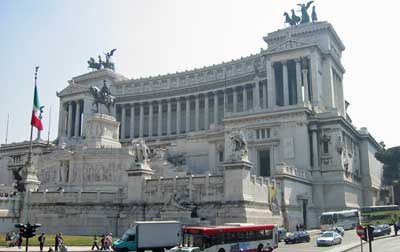
Aside from that it’s just the normal fact that they have updated the timetables as of December 2023 and have a few promotions going on, but those usually don’t happen over the busy summer season.
Eurail passes are now available in a mobile version
Until very recently, Eurail Passes were only available in paper form and they were quite confusing at first. You’d get a pass with a series of empty boxes on it and you’d need to enter your trip before you’d use your pass each day and then have the first conductor verify it. If you lost your ticket (and this was not uncommon), it was a whole ordeal to attempt to get a replacement.
Again in 2024 Eurail offers a fully mobile version that is delivered instantly to your mobile device with no delivery fee. And if you somehow lose your phone, you can resume using your Pass on your replacement with no extra headache. This is MUCH more convenient in every way and as long as you can keep track of your phone you’ll always have your train pass handy.
If your trip will be 2 weeks or less, a Eurail Pass probably won't be worth it

Eurail Passes are ideal for travelers on longer trips, and especially those who don’t want to plan all of their destinations and dates far in advance. If you have your itinerary pretty much planned out and you don’t require much flexibility, you’ll be far better off just locking in your dates and buying your train tickets as early as you can. Again, they can be surprisingly cheap if you buy 2 to 4 months out.
If you are age 27 or younger, a Eurail Pass is probably worth it

With this in mind, if you are lucky enough to still be 27 or younger, you should seriously think about getting a Eurail Global Pass Youth, partly because the sense of freedom instantly gets more expensive at age 28. The age cutoff was 25 until recently, so this change is a great deal for anyone who will be 26 or 27 at the start of their trip.
You aren’t guaranteed to save money by buying a Youth Eurail Pass, but chances are good that you WILL save money and you’ll definitely save a lot of hassle as well. Especially now that Eurail Passes come in a mobile form, it’s even that much more convenient to just hop aboard any train that is about to leave the station and not worry about buying or even having a ticket. Especially for young people, it can be really fun and exhilarating to literally just walk into a train station with your backpack and look at the departure board and then decide where to go at that moment.
If you are age 60 or over, a Eurail Pass could also be great value
Another fairly recent change is that anyone who is 60 years or older at the start of the use of a Eurail Pass now gets 10% off the normal adult fare. That new discount is going to make this a great value for many travelers who might have been on the fence about buying a full-price pass before.
>>>Check prices on Eurail Passes
If you are planning on traveling in 1st Class anyway, a Eurail Pass is probably worth it
Most 2nd Class trains provide similar comfort and legroom to Business Class airline seats, or at least close enough, so for most people it’s not worth the added expense for 1st Class. However, if you are rich or elderly or fear contact with strangers, a 1st Class Eurail Pass is probably worth it no matter what.
Not only do you get much more comfort and legroom in 1st Class, with only 3 seats across instead of 4, but there is another advantage to 1st Class on European trains. Since it’s mostly business travelers and wealthy people traveling in 1st Class, the carriages are almost always mostly empty except in the mornings and late afternoons between large cities. In 2nd Class the only available seats might be two seats in an 8-seat cabin with all the other seats taken up by a loud family or a group of rowdy friends. In 1st Class you are all but guaranteed a peaceful ride, and usually plenty of empty seats from which to choose.
A hidden Eurail Pass benefit: Making extra stops on travel days for free

Brussels in particular is one I recommend a short stop in because the small historic center around what they called the Grand Place is amazing and gorgeous, while the rest of the city is rather boring by European standards. With a Eurail Pass you can jump off the train in Brussels and explore the city center for a few hours (luggage storage is cheap and easy) and maybe have lunch, and then hop on a later train to complete your journey to Amsterdam. There are opportunities like this on many if not most trips between larger cities, and if you buy the point-to-point tickets you have to stay on the train you booked.
Another example is the high-speed train between Barcelona and Madrid, which takes about 2.5 to 3 hours in each direction. There are some interesting cities in between, but in this case you could take a morning train from Barcelona to Madrid and then check into your accommodation, and then hop on another train from Madrid to Toledo, which takes about 30 minutes and costs €14 each way. Toledo is a historic and fascinating town, but it’s also pretty small and you can explore the main sights in an afternoon. With a Flexi Eurail Pass where you buy a certain number of travel days, you can save more money by adding on these sorts of nearby stops on travel days.
If you'll be touring major cities within ONE country, a single-country pass might be perfect, and Second Class passes are available for all ages
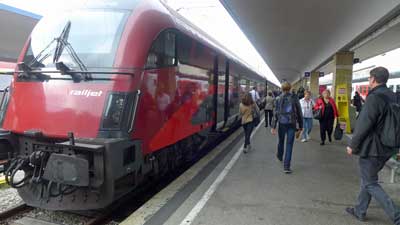
Single-country passes are still available and they MIGHT be good value for you, but it depends on which country and how much traveling you’ll be doing. If you plan on going all over a larger country such as Germany, France, or Spain, and especially if you like to make plans as you go, a Single-country pass for one of those might be your best deal. On the other hand, smaller countries (such as the Netherlands) or countries where train tickets are already fairly cheap (such as Italy) might be harder to get value out of. Long story short, for single-country passes you really need to check fares of the places you plan on going and see how they add up compared to the pass.
>>>Check prices for Single Country Passes
Eurostar (between London and Paris or Brussels or Amsterdam) tickets are now included for Eurail Pass holders for a €30 reservation fee
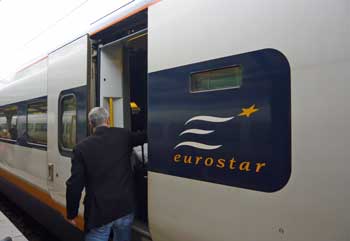
Our recent tests show that Eurostar fares one-way from London to Paris can be as low as €49 if you book about 3 months out, or as expensive as €214 for the same seat if you wait until the day of travel to buy. Round-trip/return tickets can be even cheaper if there is a promotion running.
>>>Check Eurostar prices
If you are on a really low budget, a Eurail Pass isn't a good idea
Here’s the thing. As we’ll discuss below, there are many potential benefits to Eurail Passes, and they will often save you money, but they do cost a lot and they only really save you money when traveling in the more expensive countries.
So let’s say you have a flight to Rome and then US$2,000 to last you a month after you arrive. Buying a Eurail Pass before you go would help you see a lot in that month, but you’d practically need to sleep in parks for your funds to last the whole time. You’d be better off moving slowly in the southern countries, or just in Italy itself, as a way to have the best holiday on your budget. You might also be tempted to use a Eurail Pass mostly on night trains so you can save the cost of a hotel or hostel, but those aren’t ideal for most of us.
The cheapest way to get around Europe by rail is to buy all train tickets online at least a couple months in advance. The fares are low, but they are non-refundable and non-changeable. See how far in advance you should buy train tickets to get those attractive fares.
If more than a little of your travel will be in eastern Europe, a Eurail Pass isn't a good idea
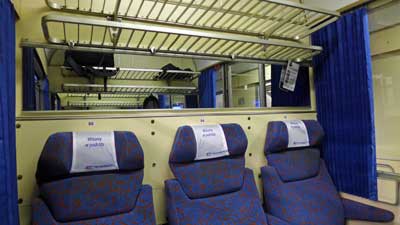
The good news is that the trains operating in this region, and the buses that operate alongside and/or where trains aren’t running, are quite cheap. So if any significant part of your trip will be into this region, a rail pass doesn’t make sense.
Basic types of Eurail Passes
Long gone are the days of the simple options, replaced by specialized passes that are meant to appeal to different styles. It should be pretty easy to figure out which is best for you, and then keep going down the page to decide if it’s worth it at all.
Eurail Global Pass – 4,5, or 7 days within 1 month or 10 days within 2 months
Until recently the minimum number of travel days with 10 days within 2 months, but now you can buy as few as 4 days within 1 month for about €200 to €250 (for first class). This can actually be an interesting strategy if you are planning many shorter and cheaper trips (like within Italy or Eastern Europe), and also 4 or 5 longer trips such as Berlin to Amsterdam. This way you can buy only 4 or 5 travel days and only use them for your most expensive travel days, and just pay as you go or buy cheap advance tickets for your other journeys.
Eurail Global Pass – 15 to 90 consecutive days
This variation allows for unlimited travel on the system for between 15 and 90 total days. They are really only a good idea for people who are certain they are going to travel very often, with much of it being in the north of Europe. The problem with them is that if you really try to get your money’s worth, you will probably ruin your trip by spending too much time on trains in general. On the other hand, if you will be in Europe for 2 or 3 months and plan on traveling around a lot, you can get a LOT of use out of a longer pass. The 3-month pass is around €900 so it’s literally about €10 per day. Imagine going back and forth between Berlin and Munich or Barcelona and Madrid for €10 per day!
One Country Pass
Obviously these are for travel within one country only. Again, they can be great deals if you plan on extensively moving around one particular country.
Where to buy your Eurail Pass
Eurail Passes are cheapest and easiest to buy online, primarily from two main sources which offer all the same products at the exact same prices:
This is a reliable company based in the Netherlands but with fulfillment offices in the US and Ireland. Price of Travel is a partner with this company, and if you use the links of this site we earn a small commission to help keep this site online. Eurail.com is usually cheaper than RailEurope (discussed below) by the way.
They were founded in the 1930s and are based in New York, but owned primarily by the French and Swiss rail companies. They offer free shipping (2 to 3 business days) on all orders of US$399 or more, although now that a mobile version is available, this is meaningless. Price of Travel is a partner with this company, and if you use the links of this site we earn a small commission to help keep this site online.
Reservations on European trains for rail pass holders
For most of the fastest trains between major cities you’ll need to reserve a seat even with a rail pass. It can usually be done just before you leave and the cost is usually around €5. Here’s a full list of which European trains require reservations and which don’t.
Reservations are required on all intercity (longer distance) trains in or involving France, Spain, Switzerland, and Italy. For most trains in Germany, Austria, Netherlands, Belgium, and most of eastern Europe, you can usually find trains that don’t require seat reservations. Often, if you don’t leave until after 9:30am or so, you can ride on any train with no seat reservation, but you have to research each leg to be sure.
How to determine which trains require seat reservations, and also get schedules
You can click on the link just above this section for a list of countries and their seat-reservation policies, but in some cases it’s actually a bit more complicated than that. For example, you can generally ride without a seat reservation on fast ICE (Inter City Express) trains in Germany if you depart after 09:30 in the morning. They do this to free up seats for business travelers who pay full fare, and they don’t mind filling up seats with rail pass holders on trains leaving a bit later.
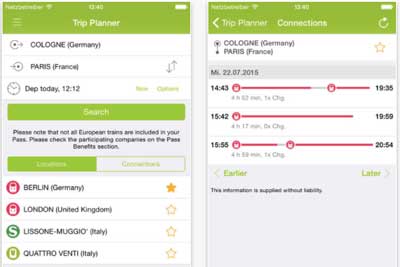
Night trains in Europe are making a comeback
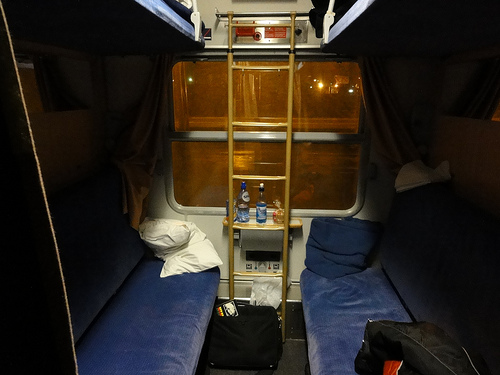
Fast forward to 2024 and night trains are not only expanding service, but they are very trendy. Some of it is nostalgia for the older way of getting around, but most of it is for environmental purposes combined with European hatred for the “low cost airline” experience with RyanAir and Easy Jet etc.
Personally I’m still not a fan of night trains because I find it difficult to sleep on them since they often get decoupled at interim stations in the middle of the night and then coupled onto other trains coming from other places, and I can’t sleep through any of that. But still, they are worth looking into and they are fun to try at least once.
A bit of warning that they tend not to be cheap and even if you have a Eurail Pass you’ll almost certainly want to book a sleeping cabin with a bunk or couchette, and that will come at an extra fee. On the other hand, if you are the sort of person who can sleep sitting upright in a normal seat, then that won’t cost any extra on most overnight trains.
Factors to consider when thinking about any Eurail Pass
Assuming you know which Eurail Saver Pass option is the best one for your type of trip by now, we’ll go over the main factors that should help you decide whether it’s the best idea for you.
Eurail Passes are best for standard ‘medium length’ journeys
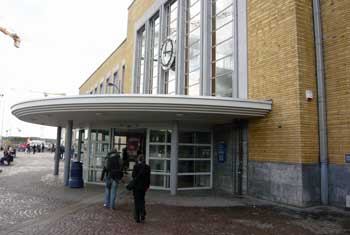
However, if you are determined to travel between Rome and Paris, it’s about a 14-hour journey that will almost certainly be overnight. In this case, a cheap plane ticket is probably better, although taking shorter hops on the train is even better, so spend a day or two in Milan or Lyon on the way instead.
And of course, if you prefer to stop in various small towns between the big ones, then a Eurail Pass won’t pay off, except for the traditional kind for unlimited travel in a given period.
Eurail Passes are better value in northern Europe, France, and Spain, and poor value in Italy
Once you do a bit of research you’ll quickly learn that train tickets (and almost everything else) are much more expensive in Germany, Netherlands, Denmark, Sweden, Norway, and Finland than they are in Greece, Italy, Portugal, and Spain. With this in mind, the regional passes can make sense if you are spending time in the south, but the Global Passes almost certainly won’t. Train tickets in Spain used to be fairly cheap, but in recent years they’ve added new high-speed trains between the major cities, and these are quite expensive.
Unlike most other countries, Italy really subsidizes its train tickets so they are quite reasonable even on travel day, and very cheap if you buy a month or more in advance. For example, you can go between Rome and Florence for around €49 if you buy on travel day, and as little as €19 if you buy well in advance. In most other countries, fares are double or triple that much for similar rides.
So consider your planned itinerary. If more than half of it is in the Mediterranean countries then look into a Regional Pass or just buy tickets as you go, because they tend to be pretty cheap. But if you are planning on spending at least half your time in Paris and places to the north of it, then a Eurail Pass is probably a money saver because those tickets are expensive.
Trains are almost always better than planes
Flying sucks, even in Europe
Until you’ve experienced the joy of traveling around Europe by train you might be tempted to “maximize” your time by flying low-cost airlines between each city. This would be a mistake. In order to get truly cheap airfares you have to purchase long in advance, buying non-refundable tickets. You might also have to commit to flights in the very early morning or in the late evening, because cheap tickets on convenient flights sell out quickly.
And again, most European airports are around an hour outside of the city. They are often on the main train lines, which helps, but still you have to deal with the madness of security and also try to get there at least two hours early. From one city center to any other city center it’s about 5 hours minimum, even if they are close, and those are pretty miserable hours.
Train travel is a positive experience

Not only are all the seats comfortable on trains, but you also have an interesting view most of the time. Better still, trains deposit you in the heart of every city, which is usually the neighborhood with the cheapest hotels and food. It’s a wonderful feeling to step off a relaxing train ride, buy a hot dog or sandwich at a local shop, and then be in your hotel room only about 10 minutes later.
Eurail Passes are better than train tickets alone
As someone who enjoys the process of crunching numbers and looking for value, I have to also mention that I’d buy a Eurail Pass even if it seemed like it would cost a bit more than the individual tickets. With a pass you get an extra element of freedom that is worth a lot more than you might expect until you’ve used one.
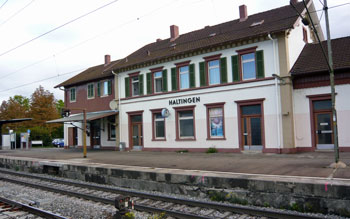
Let’s say you are heading from Amsterdam to Hamburg tomorrow morning. The 09:00 train you planned for might seem a bit ambitious after a long night out, so you can instead opt for the 10:00 or 11:00 train. As long as you walk into Centraal Station 10 or so minutes before departure, you are on. If you are flying you can’t change your ticket, and if you are buying train tickets as you go you have to be in line at the international desk at the train station at least 30 minutes early, and even then you might miss it if they are busy.
Freedom and getting to feel like a big shot
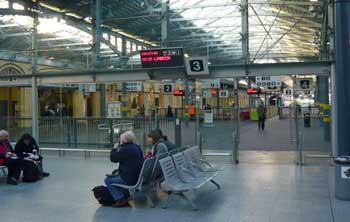
Let’s say you are staying at a hostel in Brussels, and two groups of new friends suggest that you go along with them to their next stops. One group is going to Bruges, which is a short and cheap journey, so you can join them by buying individual tickets (unless you have the unlimited pass, making it free). Then you restart your trip from Bruges, on to your next destination. The other group is headed to Berlin on a night train, which is long and expensive, but with a Eurail Pass you don’t even have to think about the cost. On you go, just like a rich person.
Buying a Eurail Pass is great for those who might run out of money
We all know people who keep meticulous track of every penny they spend, and who are always putting money away for a rainy day. And we all know people who can take a US$100 “entertainment fund” and burn through almost all of it in just a few hours. For the first type of person, a Eurail Pass can help you keep track of expenses, but it’s really the second type of person these are best for.
It’s sad to hear about people who have big plans to see their dream destinations, but they run out of money for transportation halfway into the trip, so they have to just stay put until they fly home. It happens. Locking in your major transportation costs before you leave home, and probably saving money in the process, is a wise move for anyone who isn’t as disciplined as they’d like with their money.
>>>Check prices on Eurail Passes
Bottom line: If you want to keep travel costs down, your choices will usually be a Eurail Pass or buying tickets at least a month or more early
In the last few years, almost every long-distance train ride in Europe has switched to a pricing system similar to low-cost airlines. In other words, tickets go on sale 2 to 6 months ahead of time at very low prices, and they keep getting more expensive as the train fills up and the date approaches. For most trips where a rail pass is possible, this is how things stack up:
Cheapest possible way: Buy advanced (non-refundable, non-changeable) train tickets at least 30 days in advance
Next cheapest way: Buy a Eurail Pass and make seat reservations as you go, usually only a day or less in advance.
Most expensive way: Buy train tickets as you go, or less than a week in advance.
Thinking about it this way should make the choice a bit easier. If you are the type who likes to plan each day and travel segment long before you even leave home, then buy tickets online for the best prices. This can be the best strategy for most shorter trips (10 days or less) because you simply don’t have enough time to change many things as you go anyway.
Buying a Eurail Pass won’t be quite as cheap, but you are buying a LOT of flexibility with the extra money. If you dream of making up your plans as you go, or even making up your plans just a few days in advance, this is almost always your best bet.
But if you wait too long, and just show up looking to buy train tickets as you go, they are going to cost a fortune. As recently as only a few years ago all seats would be the same price on many rail systems, so you could always just wing it. When each country computerized its rail systems so they can sell advanced tickets cheaper, they also had to keep track of seat reservations, so the whole pricing structure had changed to favor advanced ticket buyers and rail pass holders over those who’d prefer to just hop on any train as it is leaving the station.
Have a rail pass or itinerary question of your own?
It wasn’t planned but scores of people began asking me rail pass and itinerary questions at the bottom of this article and a few others. I’m happy to keep answering them and now I’m trying to organize them better as well so they are easier for other people to find.
If you have a question about specific types of European rail passes, please ask it in the comments below.
But if you have a question more about a European itinerary or other non-rail-pass questions, please click over to the European itineraries Q & A article and ask in the comments of that one.

Hello Roger,
We are a family of five (poppa and momma bear and three children-bears, 16, 14 and 11 years old). We are considering a trip to Europe in the spring (2015), through France, Switzerland, Germany and Italy. We would likely be in Europe for 2.5 weeks total. We are wondering whether a family Eurail Pass would be advisable. Thank you.
Paul,
Whether a Eurail Pass is good value really depends on the specifics of where you’d likely go and over how much time. With those 4 countries you could get a Select Pass with as few as 5 journeys, which might be a good deal if you are going to cover quite a bit of ground within that area.
So I’ll be happy to give you more specific advice if you type up at least a first draft of the cities you’d want to go between in those countries. A pass might be useful, but, for example, if you want to go between Venice, Florence, and Rome in Italy, the individual tickets are fairly cheap already, especially if you buy at least a few weeks in advance. On the other hand, if you want to go from Berlin to Munich to Paris to Lucerne to Venice, a pass would probably save you money. -Roger
Hi Roger!
I am so happy that I came upon your sight! It has a lot of great info!
Anyway, I am wanderlust-ing 20 year old planning a 3 month backpacking trip through a good chunk of Western Europe, and am considering the 3 month Eurail youth pass! And I would LOVE your opinion on whether this is a good choice for me.
My trip itinerary is currently in the making for September- November of 2016. It is a rough plan right now. But here is what I’m looking at…
Dublin- 3 nights
Manchester- 2 nights
Birmingham- 2 nights
London- 3 nights
Amsterdam- 3-4 nights
Utrecht- 2 nights
Düsseldorf- 2 nights
Heidelberg- 2 nights
Munich- 2 nights
Salzburg- 2 nights
Hallstatt- 3 nights
Villach- 2 nights
Bovec- 1 night
Tolmin- 1 night
Rijeka- 1 night
Senj- 1 night
Plitvicka jezera- 1 night
Split- 2 nights
Dubrovnik- 1 night
Bari- 2 nights
Naples- 3 nights
Rome- 2 nights
Genoa- 3 nights
Monaco- 2 nights
Grenoble- 2 nights
Lyon- 3 nights
Paris- 3 nights
Flight to Porto, Portugal- 2 nights
Home to KC!
As you can see this is a VERY rough plan, considering this is only about 60 of my 90 days in Europe. I want a lot of Flexibility! I will be stopping at places along the way between those listed above, and will most likely be staying in some places longer than others! It all depends on what I see and wish to see more of! I’m very spontaneous and have never been to Europe, so I want a lot of time and flexibility to go where I want to go and see what I want to see.
I have quite a bit of time to straighten out my plan and make it more stable! I would love to know what you think. You can offer any suggestions or changes of where I should or shouldn’t go. And if that 3 month eurail youth pass is a good choice (which I, so far, think it is). Thank you!!
Lunden,
I know you have 2 years to sort this out, which is good. This is a very ambitious plan as it stands now, and I don’t think it would be very enjoyable if you did it this way. Particularly that stretch of spending just one night in each city, would feel like you were on “The Amazing Race,” except with no cameras or prizes and very little fun. I’m actually doing something very similar to this at this exact moment (currently in Wroclaw, Poland and heading to Prague tomorrow), and my own preference is to stay 3 nights even in smaller towns, and 4 nights in larger towns. The thing is, on the travel day itself, it’s hard to squeeze in much or any sightseeing, so it’s really the non-travel days that the trip is all about.
You mention this is a rough plan, and I’m going to suggest some major revisions. I actually think a 3-month Youth Eurail Pass would be an excellent way to do this, and it would allow you unlimited flexibility. This is my favorite time of year to travel in Europe because the weather is still nice, most things aren’t crowded, and hotel/hostel prices are lower than in summer. It also means you can book pretty good hostels with just a day’s notice, or even upon arrival (although I don’t really recommend that anyway).
One thing I’d suggest reconsidering is staying in many of those secondary cities on your list. For example, there’s almost nothing interesting to see in Manchester or Birmingham (although Liverpool is a bit better). They are all large and crowded cities where very few tourists go, mainly because the “top highlight” is some municipal museum you’ve never heard of. London, on the other hand, is loaded with excellent sights and activities so I’d spend most of my Britain time there. If you want to add additional cities in Britain, then Edinburgh is an easy #2, and York and Bath/Bristol could also be worthwhile for a couple days each.
You’ve a bunch of cities like that on your list, which in the US might be the equivalent of going to Omaha or Des Moines.
On your first trip to Europe, I’d concentrate on the major tourist cities, which are tourist cities for good reasons in every case. If you do buy a Eurail Pass and feel like doing some quiet stops in between the big ones, you can plan those as you go.
Pretty much every city on this site (hover over the “Europe” tab near the top of any page) would be a good choice. Some of the cities not to miss for sure are: London, Paris, Amsterdam, Berlin, Rome, Venice, Madrid, and Barcelona.
Some of the cheaper cities that are also must-sees are Prague, Budapest, and Krakow.
So what I’d recommend is figuring out a route that connects most or all of those, and then look for other highlights in between. For example, after Prague I’m going to Cesky Krumlov for the first time, which is actually the Czech Republic’s second most visited city even though it’s tiny. I’ll be adding it to the site soon, with more helpful details.
And lastly for now, Monaco is tiny and super expensive. Instead, go to Nice, France, and visit Monaco for an afternoon by train, which is only 20 minutes from the Nice station.
As always, I hope this helps, and feel free to follow up whenever you like. I’m sure it’ll be an amazing trip, and you’ve got plenty of time to sort out the best way to do it. -Roger
Thank you SO much Roger! I really really appreciate your suggestions and will definitely be making a lot of changes to my trip! 🙂 I am even more excited to go now! And again, I am so happy that I found your blog! It’s so helpful and so inspiring. Keep it up! Safe travels.
Lunden.
Hi Roger,
Thanks for a most excellent website, which I will recommend to others. Though a seasoned traveler, I’m quite challenged in putting together plans for summer 2015: Two adults and one 12 year old leaving the U.S. around July 6 or so, returning around August 11. The only definite time-wise is our stay on the Danish island of Bornholm for the last two weeks. Our desired destinations for the rest of the time are relatively few:
Paris for 1 week
Prague for 5-7 days
as well as taking the Glacier Express and experiencing Gimmelwald in southern Switzerland, and seeing the Burg Eltz castle in western Germany….
So, kind of an arc, followed by Bornholm. Hmmm. Open-jaw flight? West to East? Trains? Car rental? If you just point me,since I don’t expect you to partake in this research project. Many thanks!
Cindy,
It’s tough for me to be confident with advice without knowing more about how many stops you plan, but my first hunch is that trains will be your best bet for getting around. Renting a car in Europe can be quite nice if you are going between smaller towns (because parking is a huge headache in cities) and you seem to be planning some of that, so it’s something to consider.
As for getting to Europe, that is an open question as well. It would probably be cheapest to do a round-trip into Paris and then book a flight on a low-cost airline back to Paris just before your departing flight. But leaving from Bornholm, that might be a bit complicated. This is kind of an unusual itinerary so you’ll probably need to run the various ticketing options yourself and just see which one seems to make the most sense. Sorry I can’t be of more help here, and feel free to ask other questions if you have them. -Roger
Thanks – Yes, flexible itineraries are the hardest, I think. Ok, one question: I was thinking open-jaw into Paris (or Prague), and out of Copenhagen (I’m familiar w. travel to/from Bornholm). Is it generally much pricier – or just a bit more – to open-jaw in Europe?
Cindy,
In most of my research, open-jaw tickets between North America and Europe are quite expensive, but I’ve seen quite a few recent cases where they can be cheap, so it’s worth checking both. I’m actually just about to fly from NYC to Oslo in a few hours, and the one-way ticket is actually lower than when I bought it a few months ago, which was already cheap. It all depends on the routes and the airlines competing for it. Best of luck. -Roger
Thanks for the quick reply Roger.
Confirms what I thought that I couldn’t make rail passes work.
The car hire in Germany seemed reasonable (much cheaper than Italy) as long as we picked up and dropped off within Germany – hence picking up in Regensburg rather than Salzburg.
Will look into working in Florence and maybe hiring the car for less days in Italy.
Again, thanks for such a great website. Really helps a lot with trip planning.
Fiona
Hi,
What a fantastic site you have with so much helpful advice for everyone.
I would love your opinion on the best way to do an 8 week trip to Europe travelling with two adults and three boys aged 14, 13 and 11. Coming from Melbourne, we will do this trip leaving early December, returning home at the end of January.
The kids have listed London, Paris, Rome and Venice as cities they want to go to. Sites they want to see include the London Eye, Anne Frank’s house, the Eiffel Tower, the Colosseum, Pompeii and some time in the snow (but we are not skiers). I have added Berlin, Prague and Barcelona as cities I would like to see. The kids are not going to want to spend day after day in museums.
The plan I have come up with so far is:
London – 5 nights
Paris – 5 nights
Amsterdam – 3 nights
Berlin – 5 nights
Prague – 3 nights
Regensburg – 1 night
Salzburg – 3 nights
Garmisch – Peterkirschen – 4 nights
Venice – 2 nights
Tuscany – 5 nights
Rome – 6 nights ( including a day trip to Pompeii)
Barcelona – 4 nights
Granada – 2 nights
Ronda – 1 night
Seville – 2 nights
Madrid – 4 nights
Was thinking of hiring a car in Regensburg and dropping off in Munich before getting the train to Venice ( to see more of the smaller towns around Salzburg and Garmisch-Peterkirschen) and hiring a car for the time in Tuscany (including making one day trip to see Pisa and Luca). Would fly from Rome to Barcelona.
Cities/ towns I have dropped to try not to make this too rushed include Edinburgh, Strasbourg, Munich, Vienna and Bolzano.
We would likely book apartments where possible as five in hotel rooms works out very expensive. Would any train passes make sense or is it better to lock in our itinerary and buy the train tickets in advance?
Any feedback you have on this itinerary would also be greatly appreciated.
Thanks. Fiona
Fiona,
Your itinerary looks extremely well thought out. Honestly, based on what you say your goals are, I can’t think of how to improve it. Planning non-museum stops frequently seems wise, and you’ve got plenty of really good ones in there.
One-way car hires in Europe tend to be quite expensive, but perhaps within Germany it won’t be bad, and it should be fairly easy to get around in that part of the country.
In Tuscany you’ll probably want to spend at least two nights in Florence itself, and then you can rent a car to visit some of the nearby hill towns and whatnot. Especially that time of year, you’ll probably get a good rate.
A handful of your train journeys would be quite expensive if you bought them as you went, but you don’t have enough of them to justify buying a rail pass so the best strategy would be to buy them online as far in advance as you can. Those are obviously very slow months for tourism, and also slow for general business travel on the trains, so you could probably get good fares even if you waited until only a few weeks before each trip. Around Christmas and New Year’s some trains will fill up with people going home for the holidays, so you should take that into account.
In case you haven’t seen it, here’s an article about how to buy train tickets in advance at the lowest prices.
And here’s one about how and where to buy the Eurostar tickets from London to Paris.
It looks like you’ve done an amazing amount of planning so far, and it really looks like you are on the right track. Let me know if I can be of any other help. -Roger
Hi, Roger,
My husband and I will travel in October within Italy (Milan-Venice-Florence-Rome) and then Rome-Paris. Would you recommend using Tren Italia and then flying to Paris? Or would you recommend taking the train from Rome to Paris?
Many thanks in advance.
Jen,
The trains within Italy on Trentalia are quite inexpensive, especially if you buy them well in advance. Most likely a flight from Rome to Paris will actually be cheaper and certainly much faster. That train ride is a bit over 11 hours, and as much as I love riding trains around Europe, that’s a very long time in one seat. Whichever you choose, you’ll want to book a flight or train as early as possible for the best fare. Best of luck. -Roger
Hello Roger,
Just stumbled upon your very informative website. I am very late in my planning. I am flying to Geneva in September and meeting a friend in Zermatt, from there we will be going to Nice and fly back from Geneva. We were considering car rental but parking will be very costly in Nice So we’re thinking using trains.So for me the travel trips are Geneva-Zermatt-Nice-Geneva, with small local trips around Nice. My question is whether to get an Eurail pass or to try and book these trips separately. Thank you, Louise
Louise,
I agree that renting a car in that area would be kind of a pain due to very expensive and hard-to-find parking. There are no rail passes that are good for only 3 trips, so you’ll want to book them individually. The sooner you book them online, the cheaper they will be. Here is info on how to book train tickets online at the lowest fares. -Roger
Thank you for confirming and the easy access to the various websites. Louise
Hi Roger,
I’ll be spending roughly 4 months in Europe working on my undergrad in Brussels, Belgium. My friend and I (both under 25) would love to travel the countries in Northern/Western Europe, including Spain and Portugal in the two weeks prior to commencement of classes. We are uncertain on which Eurail Pass to purchase, if any. The plan is to fly from Brussels to Porto. Then the following is our itinerary, which is subject to change:
Porto – 1 night
Lisbon – 2 nights
Madrid – 2 nights
Barcelona – 2 nights
Marseille/Cassis – 2 nights
Nice/Monaco – 2 nights
From France we will then head back up to Brussels. Since we are studying in Belgium for 4 months, we plan to travel Europe during the weekends (i.e. Ireland, Germany etc). Thanks Roger, we would love any advice and extra tips on our itinerary would be most appreciated.
ACoco,
I don’t think a rail pass would suit you well on this trip. Porto to Lisbon is cheap. From Lisbon to Madrid I believe the night train is still the only rail option, and it should be fairly cheap if you book at least a few weeks in advance. The same is true from Madrid to Barcelona, as well as those other rides in France.
I assume you’ll be flying from Nice to Brussels, which I’d recommend because it’s probably cheaper and way faster. Part of the challenge here is that the France-Spain rail pass is kind of expensive for each travel day, and those train fares you have in mind would only be more expensive if you waited until the travel day to buy them.
So as is so often the case, the cheapest way to do this would be to buy all of your train tickets at least a month or two in advance. The most expensive way would be to buy your train tickets on travel day, and a rail pass would be in between. It sounds like you have a pretty tight schedule, so I’d think that buying in advance would be simple enough. Another thing working in your favor is that you can usually get cheaper train tickets not too far in advance if you are willing to travel at unusual times. For example, from Madrid to Barcelona it might be €99 if you want to go at 9am (bought one week in advance), but it could only be €59 if you are willing to go at, say, 1pm. They work like low-cost airline tickets in that the off hours sell out last so they are cheaper. Good luck, and let me know if you have any other questions. -Roger
Hello Roger,
I have looked at several options for travel. I will be in Europe for 21 days June/July 2015.
If i plan ahead with my dates and book early – is point to point a cheaper option by train than bus? pros vs cons?
suggestions?
thanks
Lowell,
If you are able to book about 3 months out, then trains will be surprisingly cheap through most of Europe. But bus fares will still generally be lower. If you go to the Eurolines website, you’ll see that they have various promotional bus fares that are under €10 even for longer distances.
However, trains are generally more comfortable and almost always faster. Trains also tend to have better scenery, especially in mountain regions. Best of luck. -Roger
Hi Roger I am starting my trip from Australia on Sept 22nd for 7 weeks My first destination is Ho Chi Min city for about 8days then Russia for 8days the rest European Union so that gives about 6 weeks there. I was born in Amsterdam so i would see where i was born other than anywhere else is open. So my dilemma is should I get rail pass as I will be trying to do it on the cheap with no plans as you can read. Thanks Roger oh I am 66 years old! any advise would be most grateful
John,
The decision on whether to get a rail pass or not is mostly tied to your likely itinerary once you reach the Eurail zone. The cheapest ways to get around are trains with advanced tickets, and long distance buses. If you plan on going longer distances (at least 3 hours between cities) then a rail pass can make sense, but on such a long trip you might actually take shorter hops.
So if you’d like more help, please give us a sample of the sort of itinerary you have in mind and I can help you sort it out. -Roger